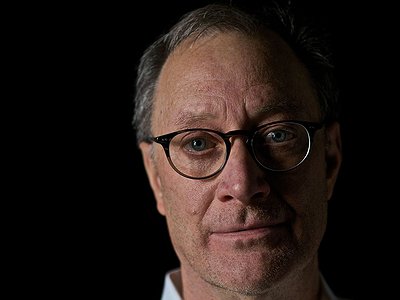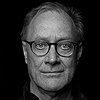Collaborations can take on many forms. What role do they play in your approach and what are your preferred ways of engaging with other creatives, including the artists performing your work?
Other musicians, especially when they are genuinely interested in music more than their career or themselves, are a complete joy for collaborations. They bring a wealth of their whole artistic selves to projects and that is something you can’t write down. I am puzzled by composers that write such complex music that it essentially reduces the performer or conductor to a “realization machine”. This, to me, is the most simplistically reductive and self-defeating approach to composition since it disallows musicians bringing their whole and deeper expressive selves to projects. I want their hearts and minds and soul as well as their executant skill brought to my music since it imbues it with a depth of humanity that cannot be notated. There needs to be space within the music for that and if such space is left, really great performers fill it with passion, expression and depth as well as technical expertise. These are all the things I want in my music, so I am trying to write work that allows for such spaces to exist.
How is writing the music and having it performed live connected? What do you achieve and draw from each experience personally? How do you see the relationship between improvisation and composition in this regard?
I believe in a three-way “eco-system” in composition: the composer, the performer and the audience. Each exist in a kind of feedback loop. If the composer does her or his job well, the performers are richly and deeply provided with a work that is meaningful, challenging without being impossible, and tremendously expressive. When they bring their executant skills and artistry to such work, they become impassioned performance vehicles for a composer’s message to the audience. If the audience, through the performers’ skills, receives and appreciates this message, they feedback to the performers in richly deserved ovations which encourages the performers to support the new work of the composer. Composer, performer and audience thus are enriched by this approach.
Time is a variable only seldomly discussed within the context of contemporary composition. Can you tell me a bit about your perspective on time in relation to a composition and what role it plays in your work?
There is only the right time. Bad music is always too long no matter how short in chronological time. Good music always seems at least a little too short no matter how long in chronological time. Beyond this I am interested in a kind of “suspended” time or ‘still’ music that seems not to move yet does. Also, the idea of music that is filled with generative motion but is also essentially still in a way that ‘bathes’ the ear in gorgeous sound and timbre. These are some of the more extreme views of time that I can embrace if the vehicle of the work allows it.
How do you see the relationship between the 'sound' aspects of music and the 'composition' aspects? How do you work with sound and timbre to meet certain production ideas and in which way can certain sounds already take on compositional qualities?
Unlike many composers these days, I still see ‘sound’ and timbre as important secondary elements rather than primary elements of composition. I am still rather traditionally interested in narrative and development of musical ideas. I am interested in the harmonic coloration and re-coloration of ideas that allows for structural and expressive repositionings. Timbre,d texture and ‘sound’ can be important vehicles for such positioning, but I do not think in terms of timbre and texture delivering the kind of immediate, rich, depth of expression to which non-musicians might be able to relate. I am frequently impressed with some sound worlds that are created by other composers for whom timbre is the main artistic driver. However, just as frequently I am left wanting more from that music: more argument, more humanity, more depth of expression, more harmonic variety.
Our sense of hearing shares intriguing connections to other senses. From your experience, what are some of the most inspiring overlaps between different senses - and what do they tell us about the way our senses work? What happens to sound at its outermost borders?
This is a perceptional rather than a compositional question. I love those moments, at dawn or dusk, sometimes in dead, snow-filled winter, when the silence is deep but there are beautiful living nuances held within it. These are the fragile moments between time and timelessness where sound barely speaks that invites the ear to reach out to the human heart. I love those times and usually the intensely beautiful dim light that accompanies them.
Art can be a purpose in its own right, but it can also directly feed back into everyday life, take on a social and political role and lead to more engagement. Can you describe your approach to art and being an artist?
I shy away from composition that is tied to political or social issues. Many of my colleagues and students produce incredibly strong work this way, but I am bothered by the idea that once that moment in history is passed, the music loses at least some of its depth and relevance. Therefore, I am more interested in natural, timeless forms and the journey of the human condition, the heart and the soul. These things are timeless to me and so I tend to use these more as vehicles for my work. I am principally interested in using music as the vehicle for art and communication rather than purely as a sonic end.
It is remarkable, in a way, that we have arrived in the 21st century with the basic concept of music still intact. Do you have a vision of music, an idea of what music could be beyond its current form?
We have only scraped the surface of how technology will continue to interact with the creator and listener. I imagine that AI will continue to grow in strength and flexibility with music. I imagine a kind of crowd-sourced real-time statistical generation of sound that can only happen through concert gatherings rather than on-line. I really hope for the survival of the symphony orchestra and choir. These two media are rich and full of potential with such rich history that I fervently hope they never pass away both for the future of music but also for the past of music. I hope that we can continue to evolve the role of orchestras and opera companies so that they embrace a broader and more inclusive vision of their mission that supports real diversity but not at the cost of quality.
There is good and bad art being made by all sorts of people. I hope that the press for inclusion does not discount the need for quality in all of the arts, that we can embrace an evolved view that says of master composers: “even though I support the status of your place in the canon, this is just a bad piece of art, and we are not going to play that work.” Equally I hope that we can use quality as the measure for inclusiveness rather than inclusiveness itself as the sole mission such that considerations of quality weigh equally with inclusion as central considerations.



